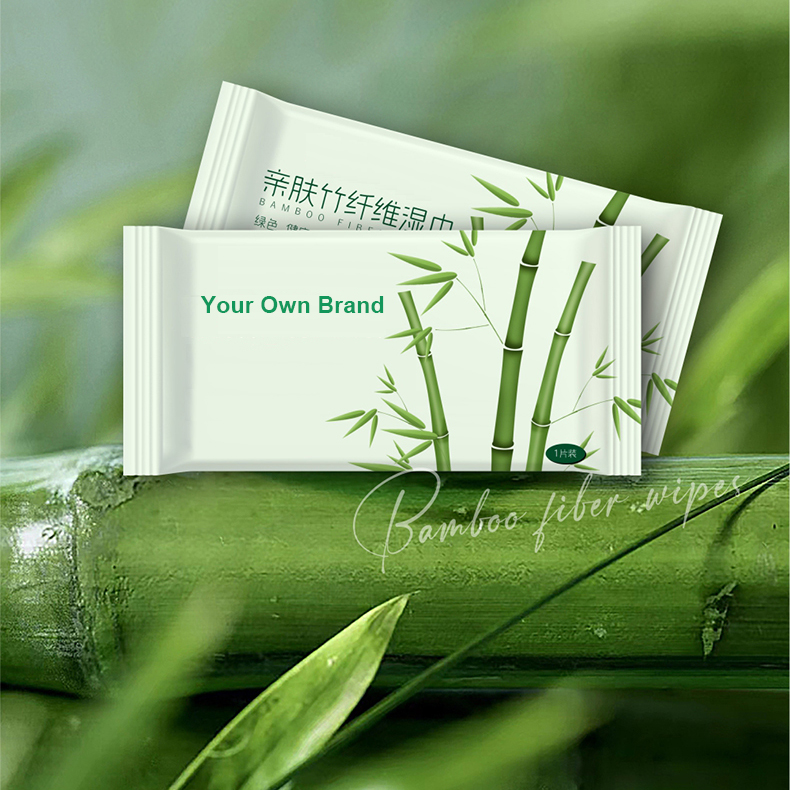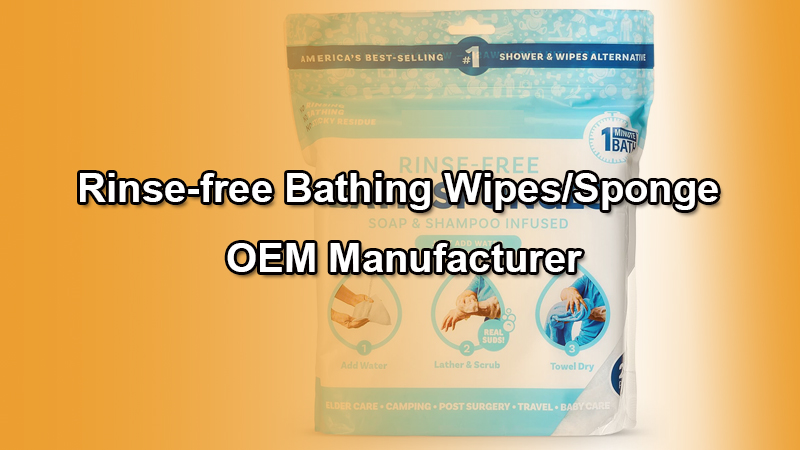
Understanding Bamboo Wipes: Features, Benefits, and How to Start Your Own Brand
July 9, 2024
Starting July 2024: FDA Requires All Cosmetics Products to be Registered
July 24, 2024Wet wipes are incredibly versatile and used for a variety of purposes, from personal hygiene to household cleaning. Understanding the different types of fabrics used in wet wipes can help you choose the right product for your needs. In this article, we will explore the common fabrics used in wet wipes and delve into specific categories like bamboo wipes, flushable wipes, biodegradable wipes, and plant-based wipes.

__Common Fabrics Used in Wet Wipes
Non-Woven Fabrics
Most wet wipes are made from non-woven fabrics. These fabrics are created by bonding fibers together using chemical, mechanical, heat, or solvent processes. Non-woven fabrics are popular for wet wipes because they are durable, absorbent, and can be produced at a relatively low cost.
Spunlace Fabric
Spunlace is one of the most common types of non-woven fabric used in wet wipes. It is typically made from a blend of polyester and viscose. The fibers are entangled using high-pressure water jets, creating a soft, strong, and absorbent material. Spunlace is often used in baby wipes, personal care wipes, and household cleaning wipes.
Wetlaid Fabric
Airlaid fabric is made primarily from cellulose (wood pulp). The fibers are suspended in air and then bonded together with latex or other bonding agents. This process creates a fabric that is highly absorbent and soft. Airlaid fabric is commonly used in industrial wipes and kitchen wipes.
Airlaid Fabric
Wetlaid fabric is similar to paper in its manufacturing process. It is made from a blend of synthetic fibers and cellulose, which are suspended in water and then bonded together. Wetlaid fabric has a smooth texture and good absorbency, making it suitable for personal care wipes and medical wipes.
Needle-Punched Fabric
Needle-punched fabric is created by mechanically bonding synthetic fibers using needles. This process produces a durable, thick, and absorbent material. Needle-punched fabric is often used in heavy-duty cleaning wipes and industrial applications.
__Bamboo Fiber - Bamboo Wipes
Bamboo wipes are an eco-friendly alternative to traditional wet wipes. They are made from bamboo fibers, which are naturally antibacterial and hypoallergenic. Bamboo is a fast-growing, sustainable resource that requires less water and pesticides to grow compared to cotton.
Benefits of Bamboo Wipes:
- Eco-Friendly: Bamboo is biodegradable and breaks down more quickly than synthetic materials.
- Antibacterial: Natural antibacterial properties make bamboo wipes a hygienic choice.
- Soft and Strong: Bamboo fibers are soft on the skin but strong enough for effective cleaning.
- Sustainable: Bamboo is a renewable resource that can be harvested without harming the plant.
Is bamboo wipes biodegradable?
Yes, bamboo wipes are generally biodegradable. Bamboo fibers are naturally biodegradable, breaking down more quickly and completely than synthetic materials like plastic. Bamboo is a sustainable resource because it grows rapidly and does not require the same level of pesticides or fertilizers as other crops. Bamboo wipes, especially those made from 100% bamboo or a high percentage of bamboo fibers, are an eco-friendly alternative to traditional wipes. However, the biodegradability of the final product can also depend on other components and additives used in the wipes.
__Flushable Wipes
Flushable wipes are designed to break down quickly in water, making them safe to flush down the toilet. They are usually made from a blend of natural and synthetic fibers that disintegrate when exposed to water and agitation.
Key Features of Flushable Wipes:
- Water-Soluble: Designed to dissolve in water to prevent plumbing blockages.
- Convenient: Ideal for personal hygiene, especially when a toilet paper is not enough.
- Environmental Considerations: Look for wipes that meet wastewater treatment guidelines to ensure they are truly flushable.
Is flushable wipes biodegradable?
__Biodegradable Wipes
Biodegradable wipes are made from materials that can decompose naturally in the environment. These wipes break down into natural substances like water, carbon dioxide, and biomass within a reasonable timeframe, reducing their environmental impact.
Advantages of Biodegradable Wipes:
- Eco-Friendly: Reduce landfill waste and environmental pollution.
- Natural Materials: Often made from plant-based fibers like cotton, bamboo, or wood pulp.
- Compostable: Some biodegradable wipes can be composted in home or industrial composting systems.
__Plant-Based Wipes
Plant-based wipes are made from natural fibers derived from plants, such as cotton, bamboo, or wood pulp. These wipes are often free from synthetic materials and harsh chemicals, making them a gentler option for the skin and the environment.
Benefits of Plant-Based Wipes:
- Gentle on Skin: Free from synthetic chemicals and fragrances, reducing the risk of irritation.
- Sustainable: Made from renewable resources, reducing reliance on petroleum-based products.
- Biodegradable: Most plant-based wipes break down naturally, minimizing environmental impact.
Conclusion
Choosing the right fabric for your wet wipes depends on your specific needs and priorities. Non-woven fabrics like spunlace, airlaid, wetlaid, and needle-punched are common in the industry due to their durability and absorbency. For those looking for eco-friendly options, bamboo wipes, flushable wipes, biodegradable wipes, and plant-based wipes offer excellent alternatives.




